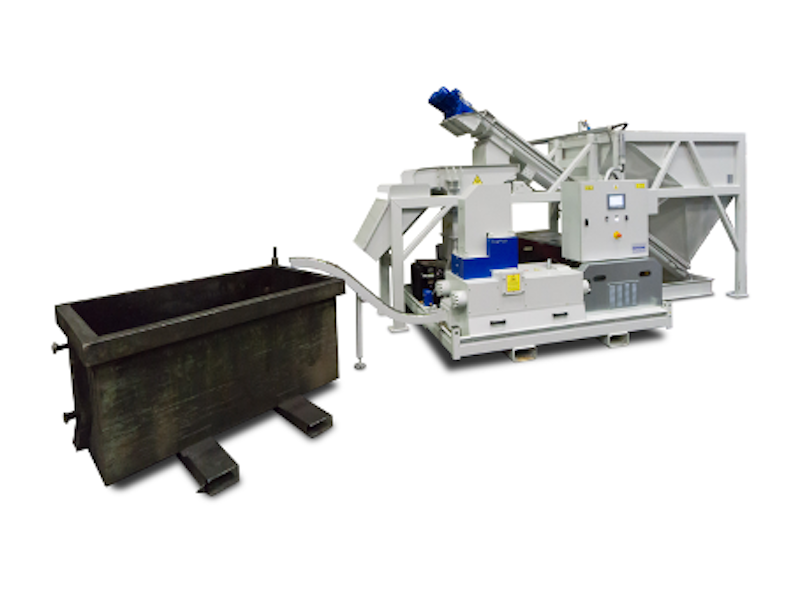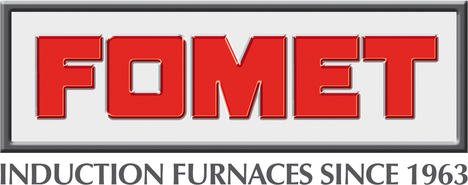Briquetting press
Hydraulic press with which loose chips are pressed (briquetted) into a briquette form by hydraulic compression. The volume is reduced to up to 1/5 of the original amount, depending on the nature of the chips. Briquettes are easier to transport and easy to store in the smallest of spaces. Fig. 1 shows a BrikStar iSwarf 550 briquetting press with special accessories (Hoecker Polytechnik GmbH).
With a briquette press, a wide variety of materials can be processed into a briquette and fed back into the economic cycle. Depending on the type of chips, moisture and bulk weight, max. 1.000 kg of material can be processed into pellets per hour. A briquetting system can be equipped in different ways with existing systems and offers a simple introduction to the recycling of chip waste.
In extrusion presses, compression is usually carried out in piston extrusion presses. The material is introduced into a cylindrical or angular channel and compressed by a piston that is driven by a hydraulic system. During the return stroke of the piston, new material is added to the press channel, the forward movement of the piston being pushed against the material already pressed in the previous stroke. The pressing pressure is created by the friction of the pressed strand in the press channel as counter pressure to the piston pressure. The pressing pressure can be regulated by changing the diameter of the press channel.
In addition to extrusion presses, briquettes can also be produced by extruder srews. The compression is carried out by a screw conveyor, which compresses the material into a strand and pushes it outwards through the extruder head. The pressed material always emerges from the press channel as an endless strand.
The video shows a briquetting press in practical use (Hoecker Polytechnik GmbH)





























